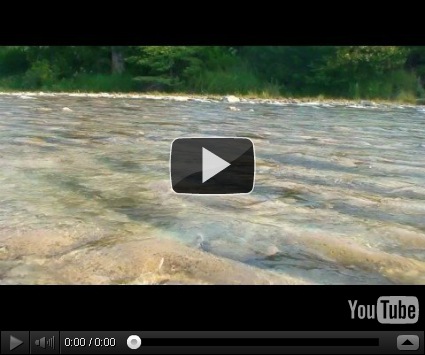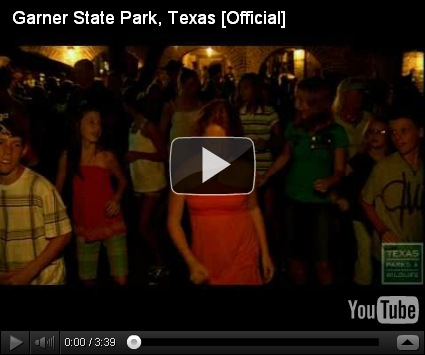For “Foodie Friday”:
Fake Food Trying To Make Its Way Into The U.S.
![tomato[1] tomato[1]](http://lh6.ggpht.com/-icRwilXYRmo/UECqPrl3W6I/AAAAAAAAwyU/rLQUwmvCciA/tomato1_thumb2.jpg?imgmax=800) “Fake foods such as candy bars, fish, cheese and tomato sauce are just a few of the items confiscated by Interpol police.
“Fake foods such as candy bars, fish, cheese and tomato sauce are just a few of the items confiscated by Interpol police.
These products could have ended up on American dinner tables, according to Dr. John Spink, Associate Director of the Anti-Counterfeiting and Product Protection Program at Michigan State University. “Consumers are being cheated.”
Here in the U.S., Food and Drug Administration agents are also on the hunt for counterfeit foods and ingredients. They’ve seized everything from fake olive oil to phony, pricey wine… all of which the FDA agents insisted are counterfeit. “We think we’re buying a high value or specific type of product and the bad guys have swapped it out with something that’s inferior,”explained Dr. Spink.
The problem is so widespread, that a national database was recently created to try to track it. The key word here is “try.” That’s because it’s hard to catch during production and shipping. And once it makes it to market, consumers don’t realize they’ve been ripped off, unless they get sick. “Food adulteration is designed to not be detected. So, frequently adulterers do not use fake ingredients that would cause immediate health problems.”
In a new study, Dr. John Spink crunched the database to find the top fakes.
- 16% involved olive oil: often diluted with cheaper oils.
- 14% involved milk found to be watered down.
- 7% was adulterated honey: intentionally mixed with sugar and corn syrups.
- 2-4% involved fruit juice, watered down or diluted with other types of juice.
Not only are you not getting what you paid for but it could be downright dangerous. “The bad guys aren’t following good manufacturing practices. There’s such a risk for contamination that can be very lethal,” said Dr. Spink.
More at: http://miami.cbslocal.com/2012/06/18/fake-food-making-its-way-into-the-u-s/
__________
Counterfeit food becoming a bigger problem
From: http://www.abc2news.com/dpp/news/health/counterfeit-food-becoming-a-bigger-problem
__________
Have You Eaten Any Fake Food Lately?
“Jeneen Interlandi, reporting for The Daily Beast, and quoting World Customs Institute, writes that the counterfeit food industry is worth about 49 Billion dollars a year, and includes everything from fine food to boxed juice. It isn’t just Prada and Rolex that are being ripped off anymore.
Another way food is counterfeited or faked is when cheaper ingredients are added as filler without telling the consumer. Examples are adding grain, pink slime, or sawdust to ground beef, adding soybean oil to what is labeled as extra virgin olive oil, or adding melamine to milk, as the Chinese did. (See my hub, “Pink Slime Turns Dog Food Into People Food.”)
The melamine caused the hospitalization of 900 American babies for kidney problems and 6 of those babies died. It is not just an economic issue where cheaper ingredients are added to foods, or substituted for what the label says the ingredients are so that a manufacturer or seller can make more money. Counterfeit food can be dangerous to your health and to the health of your children.”
Examples of foods that are often mislabeled or misrepresented
Mislabeling fish by substituting a cheaper fish for a more expensive fish is common with counterfeiting food.
Source: GettyIMages.com
Extra virgin olive oil can sometimes be as much as 90% soybean or peanut oil when counterfeited!
Source: Photobucket.com
Counterfeited honey may be "thinned" by adding high fructose corn syrup.
Source: Photobucket.com
Fruits and vegetables promoted as organic may not actually be organic, they may have come from countries where pesticides banned in the U.S. are allowed. Source: http://flickrcc.bluemountains.net/flickrCC/index.php
From: http://aufait.hubpages.com/hub/Counterfeit-Food-Growing-Problem-Unknowingly-Eating-Fake-Food
___________
Cheap Knockoffs and Counterfeits Can Be Hazardous to Your Health
"Canada Goose tested a number of counterfeit jackets that we've bought online, and a number of them have come back with no trace of down in them at all," says Spreekmeester. His concern, though, is about more than the lack of down -- the company's signature filling, which can protect against frostbite and hypothermia in extreme climates. He's worried about the alternative fillers used instead. "What they do have in them is called 'feather mulch,' which is anything you pick up off the floor. It's feathers, it's beaks, it's feet. Covered in feces, covered in mildew, covered in bacteria."
Spreekmeester also found a counterfeit jacket whose hood was lined with fur from a German Shepard. "It's not hygienic, and it's not protecting you, and it's probably just not very humane."
More at: http://www.dailyfinance.com/2011/06/17/cheap-knockoffs-and-counterfeits-can-be-hazardous-to-your-health/
_________
Consumers for Dental Choice Shakes up the Debate on Dental Mercury
“Amalgam is an archaic, dangerous dental practice left over from the US Civil War Era and is driven entirely by profits, without regard for human health
A landmark economics report reveals that after environmental costs are taken into account, amalgam is significantly more expensive than the non-mercury alternatives. In fact, the real cost of an amalgam filling is up to $87 more than a composite filling after the environmental costs of each material is considered
Another recent report by the European Commission recommends phasing out dental amalgam to reduce mercury pollution, which threatens the health of the environment, wildlife, and humans
Among the advances toward mercury-free dentistry, the New York University College of Dentistry recently announced it will no longer allow amalgam use in its clinics, nor will NYU require students to perform competency examinations for amalgam”
Interview with Dr. Charlie Brown and more at: http://articles.mercola.com/sites/articles/archive/2012/08/19/charlie-brown-discusses-mercury-free-dentistry.aspx?e_cid=20120823_NewWNL_art_5
________
The “silver fillings” deception
“Why would a primitive, pre-Civil War polluting product that is 50% mercury and cracks teeth still be going into your mouth?
Dental amalgams, known to many of us by the deceptive term “silver fillings,” are 43 to 54% mercury. The mercury from amalgam causes far-reaching problems:
Exposure to mercury, the most toxic and more vaporous of the heavy metals, can permanently damage the child’s developing neurological system, harm the adult’s kidneys, and even kill the unborn child in the womb.
To implant amalgam, a dentist drills out healthy tooth matter in order to carve the crater necessary for amalgam placement – a primitive process that irreversibly weakens tooth structure. With a damaged tooth structure and with a metal-based filling that expands and contracts with temperature changes, teeth with amalgam are much more likely to crack years later.
Amalgam is a workplace hazard, especially for young female dental workers who experience an elevated rate of reproductive failures.*
Dental mercury is the #1 source of mercury in our wastewater, so dentists are handing the clean-up bill for their pollution to taxpayers and water ratepayers.
Amalgam was introduced in the Civil War era by the new American Dental Association, which won a political battle with the physicians of the mouth, who said using mercury in oral health care is malpractice. Florida dentist James Hardy, in his book Mercury Free, refers to the creation of amalgam and the creation of the American Dental Association as the “twin-birth.””
More at: http://www.toxicteeth.org/pressRoom_recentNews/August-2011/The-silver-fillings-deception.aspx
-------------
*From me: I can attest to that, I had two miscarriages while I was a dental nurse.
_________
On This Day:
William Cobb demonstrates first solar-powered car: Aug 31, 1955:
“On this day in 1955, William G. Cobb of the General Motors Corp. (GM) demonstrates his 15-inch-long "Sunmobile," the world's first solar-powered automobile, at the General Motors Powerama auto show held in Chicago, Illinois.
Cobb's Sunmobile introduced, however briefly, the field of photovoltaics--the process by which the sun's rays are converted into electricity when exposed to certain surfaces--into the gasoline-drenched automotive industry. When sunlight hit 12 photoelectric cells made of selenium (a nonmetal substance with conducting properties) built into the Sunmobile, an electric current was produced that in turn powered a tiny motor. The motor turned the vehicle's driveshaft, which was connected to its rear axle by a pulley. Visitors to the month-long, $7 million Powerama marveled at some 250 free exhibits spread over 1 million square feet of space on the shores of Lake Michigan. In addition to Cobb's futuristic mini-automobile, Powerama visitors were treated to an impressive display of GM's diesel-fueled empire, from oil wells and cotton gins to submarines and other military equipment.
Today, more than a half-century after Cobb debuted the Sunmobile, a mass-produced solar car has yet to hit the market anywhere in the world. Solar-car competitions are held worldwide, however, in which design teams pit their sun-powered creations (also known as photovoltaic or PV cars) against each other in road races such as the 2008 North American Solar Challenge, a 2,400-mile drive from Dallas, Texas, to Calgary, Alberta, Canada.”
_________
Yesterday:
The “So Delicious” healthy coffee creamer is OK, but not as tasty as organic half-and-half. Low-fat half-and-half has too many unhealthy ingredients added to it, to make it an option. I do like my first cup of coffee to be special.
Misty and I went to get Jay, but Jay and I didn’t get much done, as he couldn’t stay long. His neighbor was taking him to get a tire fixed on his ATV.
We took everything off the shadow box that we had installed a few weeks ago, and moved it down 7” to make it line up with the mirror on the other end of the wall. It looks a lot better.
We were going to shampoo the carpet, but after it had been vacuumed, it was really too late to start on that. We couldn’t even use the battery-operated weedwhacker that we had worked on, as it hadn’t taken a charge, so fixing the handle was a waste of time on Tuesday.


















